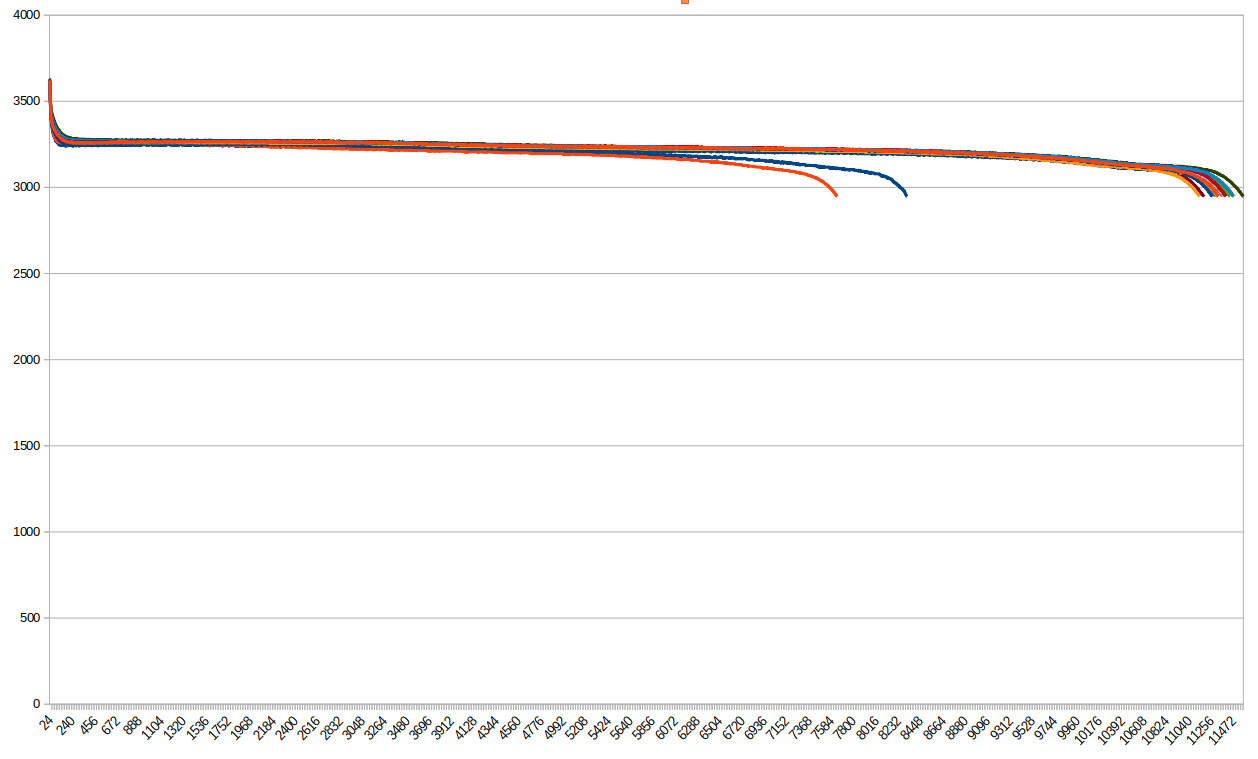It's well known that LiFePO4 cells have lower energy density than other lithium-ion chemistries that use cobalt. So I'm always very skeptical when I see LiFePO4 18650 size cells advertised with supposed 2500 - 3500 mAh capacities. Usually it's either a confusing ad from a seller who crams their ad title full of keywords and they are not actually selling a LiFePO4 but a cobalt-containing lithium-ion cell, or they are just plain lying about the capacity.
But a while back I was contacted by a company called OSN power who claimed that they had new LiFePO4 18650 size cells with 2000 mAh of capacity, versus the normal 1500 mAh. My interest was piqued because it seemed like a serious, reputable company, and the claim was not outrageous but within the realm of possibility considering technology is always improving. So I ordered 200 cells for testing.
To be honest, I didn't have much time to actively spend on testing, so I did it in a way that would not take up much of my time but could run in the background while I was busy doing other things. I set up a logging script on a Raspberry Pi that would read and log the battery voltage. I would fully charge a battery, then start the script and run from battery until the system shut down because the battery was empty. I did this for a couple of my standard 1500 mAh cells to have a reference, and then for a bunch of the 2000 mAh cells to get an idea for how consistent they are. I tried to be consistent about not leaving the ssh terminal connected, but to be honest, I didn't do too well and introduced some variability because of that. Sorry, my brain power was mostly elsewhere. :) Still, all I wanted was data that would give me an idea of how much more capacity these cells had compared to my standard ones. Here is a chart with run times I collected:

Well, what do you know: the new cells indeed run the Pi for quite a bit longer. The two shorter traces are my standard 1500 mAh cells. Sorry for the variability between them, I accidentally left the ssh terminal connected for a while for the red trace. For the 2000 mAh cells, I had the procedure down a bit better so they don't show too much spread. Assuming my reference cells are indeed 1500 mAh, the new cells do seem to have 2000 mAh capacity or better!
I started offering these batteries as an option now in my Tindie store. If you want the higher capacity battery, choose the "High-capacity 18650 size 2000 mAh battery" option in the "Battery size" dropdown. Happy hacking!
 Patrick Van Oosterwijck
Patrick Van Oosterwijck
Discussions
Become a Hackaday.io Member
Create an account to leave a comment. Already have an account? Log In.